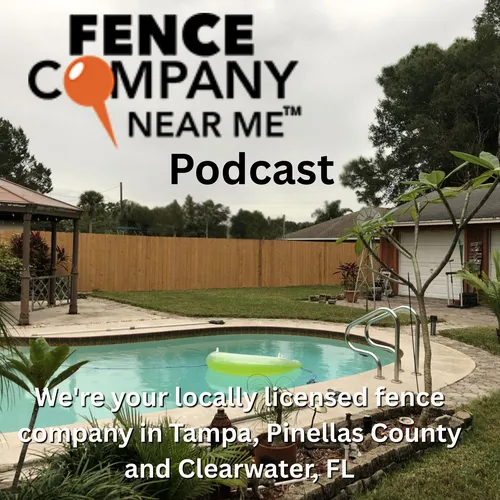Fencing Rules & Permits: What You Need to Know in Pinellas, Hillsborough, and Pasco Counties
- Author
- DJ Marcussen
- Published
- Sun 07 Sep 2025
- Episode Link
- https://fencecompanynearme.com/fencing-rules-permits-what-you-need-to-know-in-pinellas-hillsborough-and-pasco-counties/
Hi everyone! D.J. Marcussen here, owner of Fence Company Near Me. It’s a great day in the neighborhood when you decide to upgrade your property with a new fence. But before you start marking the lines and digging post holes, it’s absolutely crucial to understand the local rules and regulations. Here in Florida, especially across Pinellas, Hillsborough, and Pasco counties, there are specific guidelines and permit requirements you need to follow. Navigating these rules can be confusing, but knowing the basics will save you from potential fines and the headache of having to rebuild a fence that isn’t up to code.
Let’s start with a general overview for Pinellas County. The most important thing to remember is that almost all new fence installations, and even significant repairs, require a permit. The local city ordinances within the county, like in St. Petersburg, Clearwater, or Dunedin, will have specific rules you must follow. Generally, residential fences are limited in height, typically to six feet in the side and rear yards, and a lower height, often four feet, in the front yard. There are also setback rules that dictate how far your fence must be from property lines and public right-of-ways, which is particularly important in corner lots. Fences around pools have even stricter regulations, as we’ve discussed before, with requirements for self-latching gates and specific heights to ensure safety.
Moving into Hillsborough County, the regulations are similarly focused on safety and neighborhood aesthetics. The rules in Tampa, for example, will differ from those in unincorporated parts of the county. In general, you’ll find similar height restrictions, with a maximum of six feet being the standard for rear and side yards. Any fence taller than that, or a fence built with certain materials, might require a special review. It’s also vital to call for utility locates before any digging begins to avoid hitting buried power lines, water pipes, or gas lines, a rule that applies universally across all three counties.
In Pasco County, the regulations also center on fence height, placement, and safety. A standard residential fence is typically allowed to be a certain height, often six feet, in the side and rear yards without special consideration. The rules for fences that face a public road or are located in the front yard are usually more restrictive. In all three counties, the primary goal of these regulations is to ensure fences are built safely, don’t obstruct traffic sight lines, and maintain the aesthetic character of the community.
The key takeaway is this: you cannot just install a fence without doing your homework. Trying to bypass the permitting process is a risk that can lead to costly fines or even the forced removal of your new fence. The good news is that when you hire a professional fence contractor like Fence Company Near Me, we handle all of this for you. We know the specific codes for different cities and communities within these counties. Our job is to design a fence that not only meets your needs and looks great, but also fully complies with all local regulations. We’ll take care of submitting the permit application, ensuring the fence is built to code, and handling any inspections. It takes all the guesswork and stress off your plate.
So, while it’s smart to have a general understanding of these rules, you don’t have to become an expert on county ordinances. Leave the details to us so you can focus on enjoying your beautiful new fence.
Until next time, this is D.J. Marcussen, your friendly fence guy, reminding you that a solid fence leads to solid peace of mind!
The post Fencing Rules & Permits: What You Need to Know in Pinellas, Hillsborough, and Pasco Counties first appeared on Fence Company Near Me.
